Edgy, Asymmetrical Bob from Joico







View of sectioning pattern. Adjust the sectioning to suit the individual crown, growth pattern, hair density, hair type, facial features and overall desired design.



Take a parting that extends from the crown to the temple. Hold hair at an approximately 90-degree angle and cut to the desired length. The objective is to create a flatter, tighter head shape in this area.



Continue working in the same manner, overdirecting each parting to the first guide.

Advertisement




View of last parting overdirected to the first guide. Repeat on the opposite side.



Refine to create a tighter central nape area. Take a vertical parting that extends from the crown to the nape, and cut so that length flows from shorter at the nape to longer at the crown. Pay particular attention to the crown area: always work with the natural growth pattern and adjust tension accordingly.



Continue to pivot off the crown area and overdirect each parting to the first guide. This will maintain extra length behind the ear area.



Cross-check frequently. Note that the center is shorter to maintain length behind the ear area.

Advertisement




Elevate hair to an approximately 90-degree angle and connect the top area to the crown area ONLY. Note that the side areas underneath are disconnected from the top areas. Cut the top area to a length that removes bulk and excess weight, yet is long enough to retain softness, texture
and movement.



Continue to pivot off the crown area and overdirect partings to first guide. Adjust the overdirection to suit the individual hair density, texture, etc. Blow-dry hair smooth with a Denman brush. Note that this technique is equally effective on wavy/curly hair, as long as you adjust the length and angles to suit the overall individual hair design.



Refine the hairline when the hair is dry for ultimate control. Create a clean, soft, head-hugging silhouette using point-cutting, chipping and elevation, always working with the hairline growth pattern.



Section hair as shown to isolate the fringe area. Cut a curved fringe to open the face shape, enhance the cheekbones and draw attention to the eyes and eyebrows. Point-cut and chip into the fringe to soften the line and enhance movement and texture.

Advertisement




(Optional): Remove length on one side to create asymmetry in the side areas. Note that the line does not connect to the length behind the ear.



Point-cut all the internal lengths to create softness and fluidity in the disconnected areas. Further refine hair after the color process to ensure the haircut and color flow seamlessly.


Edgy, Asymmetrical Bob from Joico
If it’s not the pixie—it’s the bob, or lob as we like to call it. It’s short, yet chic—perfect for your scissor shy clients who aren’t ready to go super short, but want to remove some length. This trendy, asymmetrical bob is short, sassy and hip. Perfect for the client looking for an edge. After more than two decades of subtlety and minimalism, In-Excess, Joico‘s new trend collection, heralds a return to the extravagance of the 1980s.
But rather than reproduce the past, Joico International Artistic Directors Damien Carney and Sue Pemberton did as many fashion designers did for their spring 2014 collections and cleverly reinvented the most defining trends of “the decade of excess” for a new era.
“The goal wasn’t to create a retrospective of past trends, but instead be inspired by the more-is-better attitude of the time,” said Carney. “It was as if no one ever questioned, ‘is this too much?’ That’s the spirit that drove this collection.”
Bring this cut to life. Get the Warm, Fiery Red Color Formula!
Watch Joico’s In-Excess Photo Shoot!
Subscribe to behindthechair.com
On Paper Magazine! SUBSCRIBE NOW
HOW-TO STEPS 
-
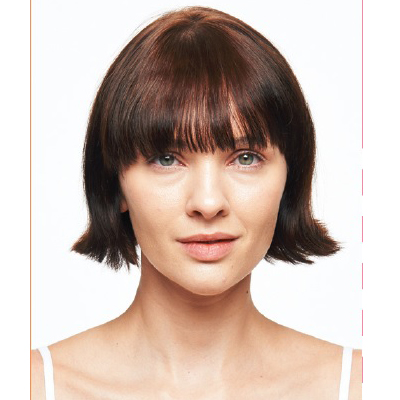
 1
1 -
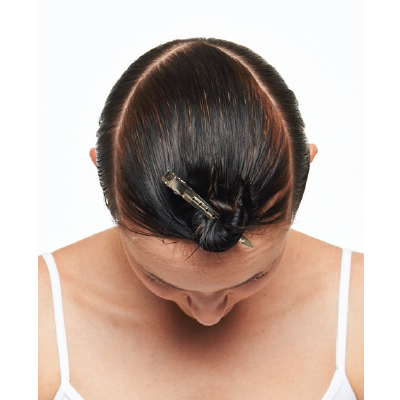
 2
2View of sectioning pattern. Adjust the sectioning to suit the individual crown, growth pattern, hair density, hair type, facial features and overall desired design.
-

 3
3Take a parting that extends from the crown to the temple. Hold hair at an approximately 90-degree angle and cut to the desired length. The objective is to create a flatter, tighter head shape in this area.
-
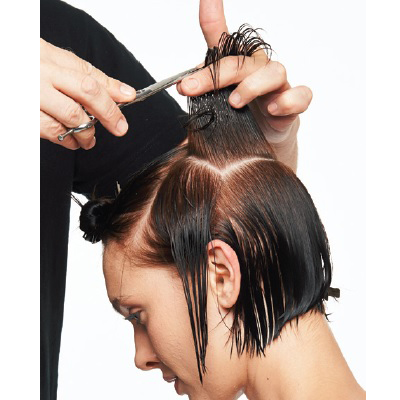
 4
4Continue working in the same manner, overdirecting each parting to the first guide.
-

 5
5View of last parting overdirected to the first guide. Repeat on the opposite side.
-
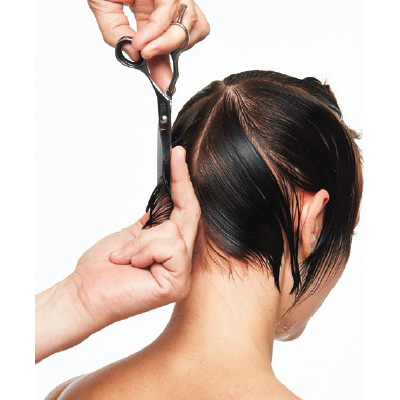
 6
6Refine to create a tighter central nape area. Take a vertical parting that extends from the crown to the nape, and cut so that length flows from shorter at the nape to longer at the crown. Pay particular attention to the crown area: always work with the natural growth pattern and adjust tension accordingly.
-
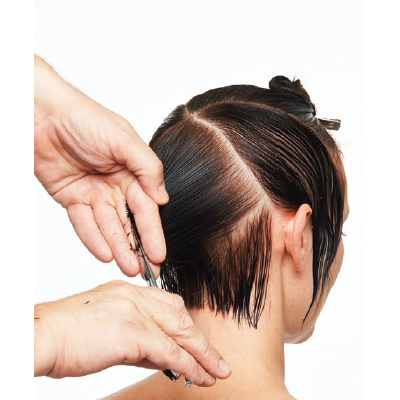
 7
7Continue to pivot off the crown area and overdirect each parting to the first guide. This will maintain extra length behind the ear area.
-

 8
8Cross-check frequently. Note that the center is shorter to maintain length behind the ear area.
-

 9
9Elevate hair to an approximately 90-degree angle and connect the top area to the crown area ONLY. Note that the side areas underneath are disconnected from the top areas. Cut the top area to a length that removes bulk and excess weight, yet is long enough to retain softness, texture
and movement. -
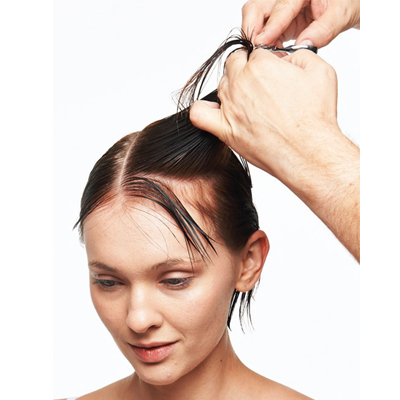
 10
10Continue to pivot off the crown area and overdirect partings to first guide. Adjust the overdirection to suit the individual hair density, texture, etc. Blow-dry hair smooth with a Denman brush. Note that this technique is equally effective on wavy/curly hair, as long as you adjust the length and angles to suit the overall individual hair design.
-

 11
11Refine the hairline when the hair is dry for ultimate control. Create a clean, soft, head-hugging silhouette using point-cutting, chipping and elevation, always working with the hairline growth pattern.
-

 12
12Section hair as shown to isolate the fringe area. Cut a curved fringe to open the face shape, enhance the cheekbones and draw attention to the eyes and eyebrows. Point-cut and chip into the fringe to soften the line and enhance movement and texture.
-
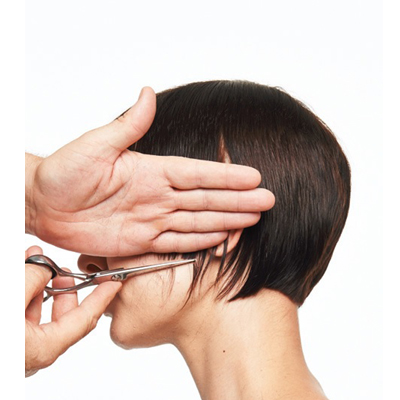
 13
13(Optional): Remove length on one side to create asymmetry in the side areas. Note that the line does not connect to the length behind the ear.
-
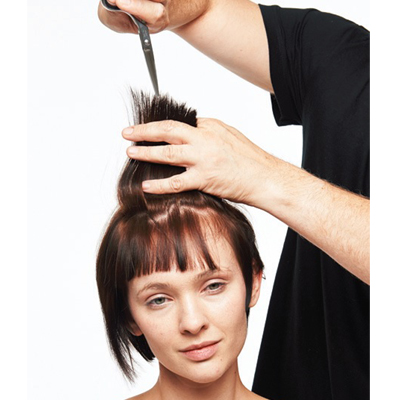
 14
14Point-cut all the internal lengths to create softness and fluidity in the disconnected areas. Further refine hair after the color process to ensure the haircut and color flow seamlessly.
-


YOU MIGHT LIKE THIS
-
Hair Color
Warm, Fiery Red from Joico
-
Hair
Long, Disconnected Pixie from Joico
-
Hair Color
Diagonal, Vertical, Horizontal by Joico
-
Bobs
Cropped Bob with Square Fringe by Damien Carney for Joico
-
Hair Color
Icy Teal Color Pop from Joico


TRENDING NOW!
-
BTC Hair Trend Report
The Biggest Haircut Trends of 2024
-
Blonde
Conditioner Before Toner: Common Hair Myth Debunked
-
Monthly Product Launch List
11 New Game-Changing Hair Launches To Add To Your Arsenal
-
Copper
What Is The "Cowboy Copper" Hair Trend? Here's What It Really Means...
-
Copper
Muted Bronze
-
Haircuts
SHAG 101: The Dos And Don'ts
-
Frizz
Straighten & Smooth 2A, Fine-Medium Density Hair
-
Business
Don't Fall Victim To Hair Industry Greenwashing—Read This First





